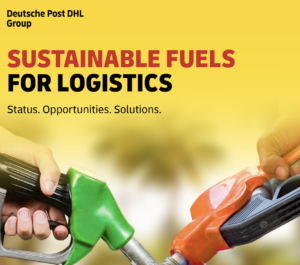When you think about the energy transition, what images come to mind? Wind turbines in the sea? Arrays of solar panels? Maybe an electric truck? All these things will have a significant part to play in the world’s future energy systems. And all of them illustrate one of the defining characteristics of the change that is unfolding today: the role of renewably sourced electricity as a cleaner, more efficient source of energy.
There is, however, a problem with this picture. Some of the ways we use energy are difficult or impossible with today’s electrical technologies. Many of those are applications that consume very large quantities of heat, such as primary steelmaking or cement production. Others are applications that require high-density energy storage, such as ocean shipping, air transport or long-distance road freight.
As the world moves away from the large-scale use of fossil fuels, we will need to find alternative sources of energy for these industries. In a new white paper, a team of Deutsche Post DHL Group specialists examines the options – available today and in development – that might allow that goal to be reached.
Conclusions
- E-mobility is the technology of choice in the transport sector. But its use is currently restricted to short range transports only.
- Alternative fuels are sustainable only if they come from renewable sources and have no negative impact on the environment, climate or society when burned.
- Sustainable biofuels are one way to gradually reduce the use of fossil fuels. They are readily available, biodegradable and less toxic than other fuels. One argument for e-fuels: power from renewable energy can be stored and transported as a liquid or gaseous fuel.
- Biofuels and e-fuels have the greatest potential to become a sustainable substitute for fossil fuels. A range of alternatives is being developed right now or is already in use. But no comprehensive knowledge base or binding standards have been developed so far. Feasibility appears to be more a matter of commercial viability than one of technology.
Marijn Slabbekoorn, GoGreen Program Manager Ground Operations Europe of DHL Express: “ We are already using the StreetScooter on routes up to 200 kilometers. What we really need is a wider variety of actually available and suitable zero-emission vans, especially in the large commercial vehicle segment. There is still a large discrepancy between the clean solutions available on the market today and our targets for 2025. Public investment – both in e-vehicles and in the construction of charging stations – could help meet the challenges we face.”
Source: DHL


[…] mocht deelnemen aan een workshop met World Economic Forum over de toekomst van stadslogistiek. Elektrisch rijden is nu al een ‘no brainer’ bij bestelauto’s en op termijn ook voor zware vrac…. Ze zijn goedkoper om te maken en, op termijn, goedkoper in het dagelijks gebruik. Het is de […]